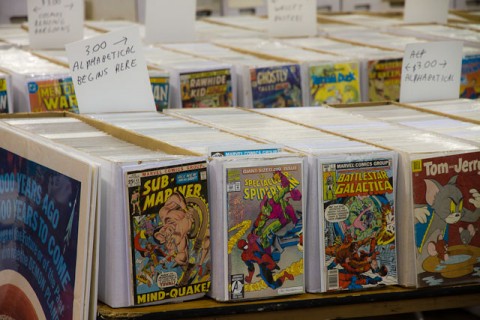The 9.2 grade has become synonymous with a quality high grade comic. The 9.2 grade is the right most column in the Overstreet Comic Book Price Guide. The 9.2 is the industry standard high grade.
Over the years, especially in the CGC era, we’ve been conditioned to pay more if the book has a 9.4 or higher grade. The thought is that the guide only goes to 9.2 and this book is better than a 9.2 so it should be worth more!
Well it’s time we stopped taking the 9.2 in the guide so literally.
There’s this idea that’s been bouncing around in my brain lately about a floating 9.2 scale.
The market has already been practicing this in an ever shifting and changing way. These shifts are directly related to the CGC population census. I’ve noticed some Bronze Aged 9.4s trading at the Overstreet 9.2 price range and I’ve seen some modern 9.6 comics trading at the Overstreet 9.2 price range so I’m assuming the market is naturally operating on some sort of floating grade mechanism.
I’ll interject a thought here. Some may say that the market is pricing independent of the guide and that the two are not related. I disagree. Most buyers still reference the Overstreet and correlations to grade and guide pricing are still very strong in most of the market.
I was wondering if there was a way to quantify through a formula of some kind what the standard high grade is per book. What is the “9.2” for this book?
Here’s what I’m thinking. We base this formula on the CGC census in the following way.
We pick a percentile like say 90% (note that this will work best on books with a lot of census population), so if there are 345 on the census and the 90percentile fell in say the 9.0 grade say for a 1950s book we can then call this the true 9.2 for this comic. This exercise is like calling an election result with only 26 percent of the ballots cast. We just assume that if another 1000 came in the grade percentiles would not change. It would be a mathematical formula with small +/ – variations.
Good idea?
We’d have to pick the right percentile that seems to work best across the board and it’s this part that may take some feeling out.
I can see using this percentile technique to score some books on the cheap. Imagine finding a tough early Silver Age comic with a percentile that shows 8.5 to be the true 9.2. We could scoop up that 8.5 relatively cheap (they don’t traditionally do well relative to 9.0s). If the market is just time should show that this grade is the high grade benchmark and since we’re so far ahead of everybody we’ll reap the benefits of the market price adjustment!
A Floating 9.2 formula could help me find out the standard high grade copy for any particular comic.
Now that would be cool!




Walt, do you have access to the CGC data base?
Yes I do Nestor, as a cgc account holder I have access to the data.
I’ve noticed this trend for some time about floating price for certain books in grade. Case in point I bought from auction 4 years ago Sub-mariner 1 (68) cgc 9.4 with white pages for the price of a 9.2. And now I’ve noticed the 9.2’s are going for the of price 9.2 and 9.4’s over. So prices can change depending on demand.
This could only work when and if large numbers of comics are cgc’d across the board. Seems unwise to base all sales on cgc numbers. Too many variables. If CGC only has listed a few copies of a certain book that is
A. not that hard to find or
B. is just so abundant that people just don’t have it slabbed,
it would drive up the price just because it is perceived to be rare based on CGC data.
Many of us do not collect that way and when considering a 9.4 vs a 9.2, cgc would be the only opinion-breaker.
Seems problematic.
I think the bigger problem is people take seriously the idea that these folks can and do distinguish 9.2 from 9.4 from 9.6 from 9.8 from 9.9 from 10.0 but not from say 6.2, 6.4. 6.6, etc.
You’ve got to look at what You can see of the book in the slab, read the grader’s notes (which a seller should have a printed copy of handy; they paid for the analysis) and make your best judgement. Unless of course you’re really just buying the # in the left corner for later resale, which I fear many people are. This hair-splitting at the top of the grading scale will one day bite this hobby in the butt when a plentiful, hot book next pulls a Howard the Duck #1 and skyrockets and crashes a year or so later.